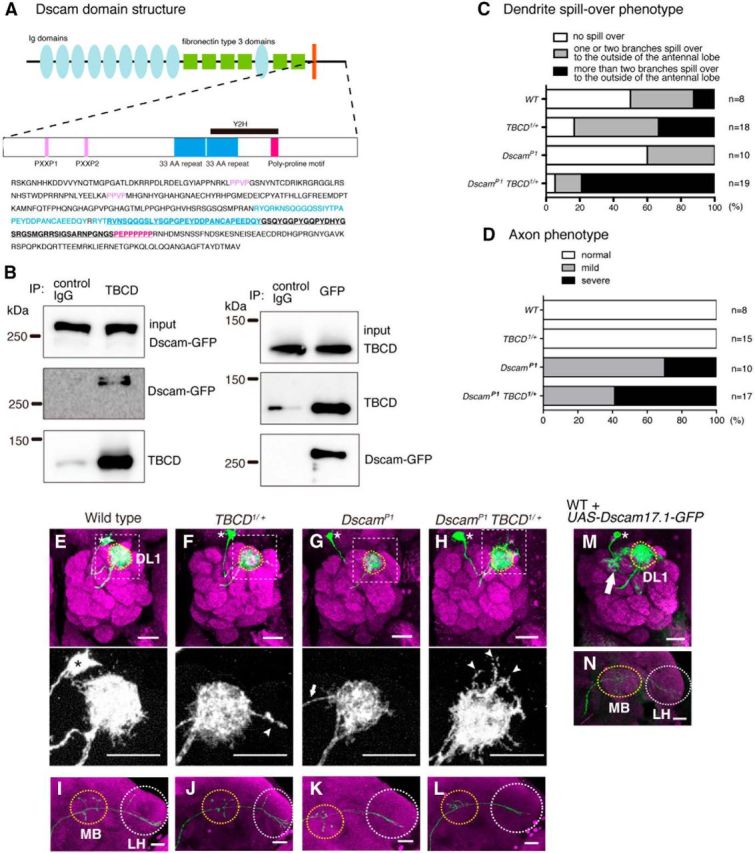Figure 7.

TBCD and Dscam form a complex and cooperate with each other in dendrite morphogenesis of PNs. A, Scheme of Dscam domain structure. Dscam has ten Ig domains (light blue ellipses), six fibronectin type III domains (green squares), a single transmembrane domain (orange bar), and a C-terminal cytoplasmic domain. Ig domains 2, 3, and 7, and the transmembrane domain have alternative splice variants. The cytoplasmic domain is shown in detail; PXXP domains (pink), 33 aa repeats (blue), and poly-proline motif (magenta). The candidate region interacting with TBCD is underlined in the sequence. B, Western blot analysis of S2 lysates immunoprecipitated using anti-TBCD and anti-GFP. C, Quantification of the dendrite spill-over phenotype. D, Quantification of the axon phenotype. E–L, Representative images of DL1 PNs of WT clones (E, I); WT clones on TBCD1 heterozygous background (F, J); DscamP1 homozygous mutant clones (G, K); and DscamP1 homozygous mutant clones on TBCD1 heterozygous background (H, L). PN morphologies are labeled with green, and magenta shows Brp staining. Asterisks and dotted circles in E–H denote cell bodies and the DL1 glomerulus, respectively. Arrowheads denote the dendrites that extend beyond the antennal lobe (F, H, bottom). MB and LH are marked with yellow and white-dotted circles, respectively in I-L. Scale bars, 20 μm. F, G, The dendrites of DL1 PNs for TBCD1 heterozygous and DscamP1 targeted the DL1 glomerulus. Arrow shows the dendrite from the cell body (G). H, The dendrite spill-over phenotype was enhanced in DscamP1 homozygous mutant clones on TBCD1 heterozygous background. I, J, In DL1 PNs for WT (I) and TBCD1 heterozygous (J), axons innervated the MB and the LH and showed the stereotypical L-shaped pattern in the LH. K, L, The dorsal branch of DL1 PNs was lost in DscamP1 (K) and DscamP1 clones on a TBCD1 heterozygous background (L). M, N, In DL1 PNs overexpressing Dscam17.1-GFP, the dendrites innervate the DL1 glomerulus (yellow-dotted circle) and additional glomeruli (M, arrow), and the axon does not form the dorsal branch at the LH (N).
